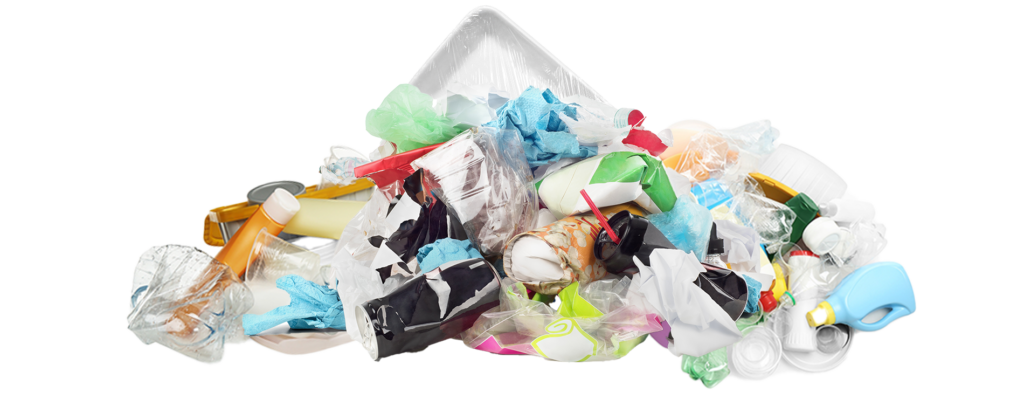Still Left Holding the Bag
Plastic Packaging In Canada’s Grocery Stores, 2 Years Later
A trip to the grocery store is a frustrating experience for people who want to avoid single-use plastic packaging. Our food is increasingly encased in throwaway plastic at a time when governments in Canada and around the world are committing to address the plastic pollution crisis and related human health risks.
To identify trends in the plastic packaging we face when we shop for food, Environmental Defence commissioned surveys of high-traffic grocery stores across Canada, including Loblaws, Sobeys, Metro and Walmart, two years apart. The most recent survey was conducted in the summer of 2024.
We looked at key shelves, including produce, baby food and soups.


Plastic in the Baby Food Aisle (2024)
Plastic in the Produce Department (2024)
Plastic in the Soup Aisle (2024)
The 2022 audit found 71 per cent of items in the produce department were packaged in plastic, including whole fruits and vegetables. Only 27 per cent of items were available with no packaging. From individually-wrapped coconuts, squash and cucumbers to bags and pouches for citrus fruits, bananas and peppers, plastic-wrapped whole fruit and vegetables have become an unnecessary norm. When we returned in 2024, we were disappointed to see the amount of plastic in the produce section remained essentially unchanged, now sitting at 70 per cent.
Alternatives
More than three-quarters of all items marketed as baby food were packaged in plastic in 2022. This includes a significant number of plastic pouches now used for purées that were once almost exclusively packed in glass jars. Disturbingly, this number is even higher now in 2024, jumping to a whopping 82.5 per cent.
Food consumed directly from plastic packaging is a source of microplastics. Babies and young children, who are particularly vulnerable to toxic chemical exposures, fed from single-use plastic-wrapped food and containers are likely ingesting microplastic particles and chemical plastic additives.
Plastic packaging demands closer scrutiny and action to protect this vulnerable group from the health effects of microplastics and toxic additives.
Alternatives
This year, we decided to visit a new aisle. We audited multi-pack beverages to gauge the impact of the federal ban on six-pack rings, which came into effect in June. We found 38 per cent of soft drink 6- and 8-packs held together with plastic wrap – a regrettable replacement for six-pack rings.
Alternatives
Soups were the least likely items to be packaged in plastic 2022, at 35 per cent, but our most recent audit found 41 per cent of the soup aisle is now packaged in plastic. If this trend continues, the majority of soups will soon be packaged in plastic or mixed materials, such as Tetra Pak, instead of more recyclable cans.
It is clear that Canada’s major grocery retailers will not voluntarily eliminate throwaway plastic on their shelves. Instead — and despite the growing concern about plastic pollution and the impacts of plastics on the environment and our health — the grocery industry is doubling down on garbage plastic packaging.
Canada needs requirements for grocery chains to reduce unnecessary plastic, go package-free wherever possible and adopt accessible and convenient systems that allow refilling of packaging and containers.

Federal action needed on plastic food packaging:
Retailers must move to eliminate single-use plastic packaging and protect the public from harmful chemical additives in packaging:
ACKNOWLEDGEMENTS:
Produced by ENVIRONMENTAL DEFENCE. Researched and written by Karen Wirsig with contributions by Ashley Wallis, Brittany Harris, Cassie Barker and Lauren Thomas. Additional research by Merchandising Consultants Associates Limited. For a full list of contributors, please download the report.
© Copyright April 2023 by ENVIRONMENTAL DEFENCE CANADA. Permission is granted to the public to reproduce or disseminate this report, in part, or in whole, free of charge, in any format or medium without requiring specific permission. Any errors or omissions are the responsibility of ENVIRONMENTAL DEFENCE CANADA.